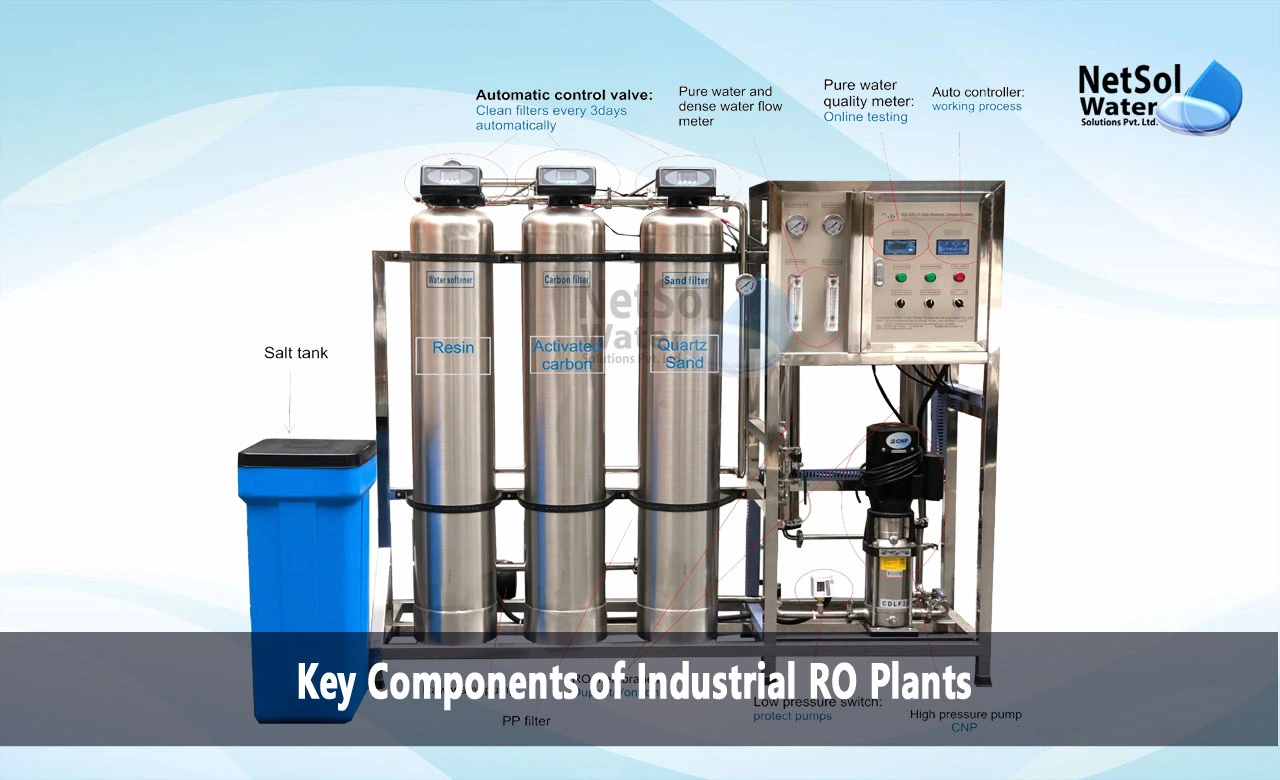Key Components of Industrial RO Plants
As more industrial facilities look to reverse osmosis (RO) technology for reliable process water production from alternative sources, it's important to understand the core components involved. An industrial RO plant is a comprehensive system integrating numerous process areas and equipment lineups - all critical for consistent performance. From extensive pretreatment to the membrane separation core and residual handling, each component plays a dynamic role.
We'll take a look at the major components found in a typical industrial RO plant design. Understanding their functions and how they integrate provides better insight into the full scope of an RO plant.
Intake and Screening
The first process area handles bringing the raw feed water into the plant from its source, whether groundwater wells, surface water, or other suppliers. Screens, baskets or microstrainers remove any large debris or particles that could damage downstream equipment. Since RO recovery rates concentrate contaminants, proper feed screening is essential.
Pretreatment
Arguably the most extensive component, pretreatment encompasses all the processes for removing suspended solids, organics, microbes, hardness, and other contaminants that can severely foul RO membranes. This multi-stage barrier includes media filters, softeners, clarifiers, microfilters and more, depending on the feed water quality.
Chlorination for microbiological control and acid/antiscalant addition for scale prevention are common pretreatment steps. Without effective pretreatment tailored to the feed characteristics, the entire RO process suffers.
Cartridge Filtration
As the final particulate barrier before RO membranes, cartridge filters remove any remaining suspended solids larger than 1 micron. These high-efficiency depth filters use precisely-rated pleated media in disposable housings. Redundant cartridge vessels allow continuous production during periodic change-outs.
High Pressure Pumps
Since RO membrane separation requires overcoming the osmotic pressure differential, high pressure pumps are required to feed the RO array. These could include multi-stage centrifugal pumps or positive displacement pumps like plunger types able to consistently achieve pressures from 600 psi up to 1200 psi.
RO Membrane
This is the core process area where the actual RO separation occurs across the semi-permeable spiral-wound membrane elements. The membranes are contained within fiberglass reinforced pressure vessels able to withstand the high feed pressures. The specific membrane type, configuration of vessels and elements, and operating parameters are carefully selected based on the system design for ideal performance.
Energy Recovery Devices
To improve operating efficiency and reduce pumping costs, energy recovery devices capture the pressure energy from the concentrate stream let down after RO separation occurs. This energy is transferred back to the feed stream, reducing the required head from the high pressure pumps. Both isobaric energy recovery devices and hydraulic turbocharger options are utilised.
Disinfection
Disinfection prevents microbiological growth and regrowth in the purified permeate stream and distribution systems. Methods include ultraviolet (UV) irradiation with UV lamps, oxidants like chlorine or ozone addition, or potentially membrane filtration.
Clean-In-Place (CIP) Systems
Periodic cleaning is required to remove fouling and mineral scaling from the membrane elements over time to restore production capacity and salt rejection. CIP systems utilise heated caustic or acid solutions circulated through the membranes, followed by extensive flushing. Pumps, tanks and piping are dedicated to these critical cleaning cycles.
Chemical Handling Systems
In addition to CIP chemicals, the RO process requires dosing systems for scale inhibitor antiscalants, acid or caustic pH adjustment, biocides like chlorine, dechlorination chemicals, coagulants, and more, depending on pretreatment needs. Day tanks, chemical metering pumps, static mixers and piping networks distribute the various chemicals throughout the process areas.
Residual Handling
The concentrated reject stream from the RO membrane array, referred to as the brine or concentrate, requires proper handling and disposal methods depending on volume and composition. Options include evaporative waste concentration and crystallisation, deep well injection, hauling offsite, or industrial reuse. Pumps, lined piping and storage basins or ponds manage this residual stream.
Storage Tanks
Atmospheric and ground storage tanks enable bulk storage for permeated water, feed water, CIP solutions, and other process tankage needs. These are sized based on production and cleaning requirements, fire water and distribution demands.
Controls and Instrumentation
Industrial RO plants cannot function optimally without extensive controls and instrumentation monitoring every aspect of operations. Programmable logic controllers (PLCs), human-machine interfaces (HMIs) and supervisory control and data acquisition (SCADA) systems precisely control all equipment, flows, pressures and chemical doses while collecting operating data. Online instruments, including flow meters, pressure transmitters, conductivity analysers and particle counters, feed real-time conditions into the control platform.
Electrical, Mechanical and Infrastructure
All piping, valves, pumps and other mechanical components integrate together for dependable operation. Extensive electrical substations, motor control centres and cable trays distribute power reliably to all motors and instruments.
The entire industrial RO plant is contained within structural, architectural, HVAC and plumbing facilities that protect personnel and equipment while enabling efficient operation and maintenance activities.
Conclusion
While the core reverse osmosis membrane separation process is relatively simple conceptually, an industrial RO plant incorporates numerous critical components spanning pretreatment, pumping, membrane separation, cleaning, chemical handling, residual management and more. It's the careful integration of each system, leveraging first-principles design and deep process knowledge, that enables consistent performance over a multi-decade lifespan.
With so many components relying on each other, the right engineering and oversight during design, construction, commissioning and operation is paramount for any industrial RO facility to operate reliably. Deep technical expertise in developing these sophisticated water treatment systems unlocks the reliability and efficiency advantages industrial users seek.
Netsol Water is Greater Noida-based leading water & wastewater treatment plant manufacturer. We are industry's most demanding company based on client review and work quality. We are known as best commercial RO plant manufacturers, industrial RO plant manufacturer, sewage treatment plant manufacturer, Water Softener Plant Manufacturers and effluent treatment plant manufacturers. Apart from this 24x7 customer support is our USP. Call on +91-9650608473, or write us at enquiry@netsolwater.com for any support, inquiry or product-purchase related query.



